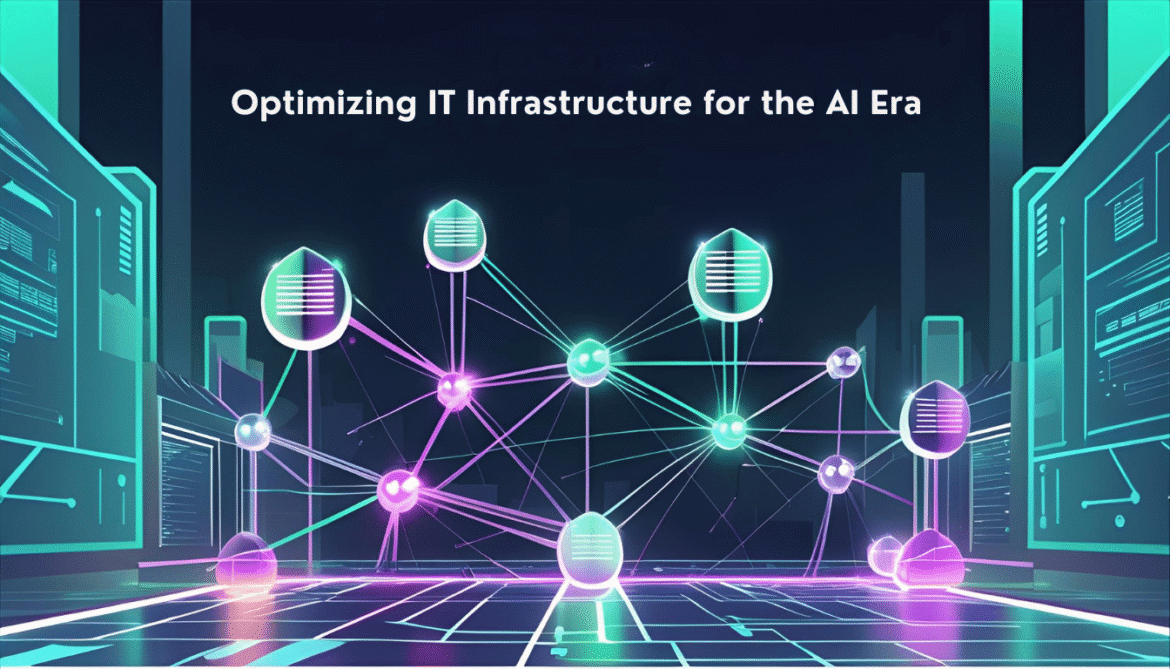The rapid adoption of Artificial Intelligence (AI) is transforming industries and redefining how businesses operate. Yet, as organizations race to integrate AI into their workflows, many face a common hurdle—legacy IT infrastructure that struggles to keep up with AI’s demands.
In the age of AI, optimizing IT infrastructure is no longer optional; it’s a strategic imperative. Success depends on the ability to process massive datasets, scale operations dynamically, and support AI workloads with minimal latency. Here’s how you can future-proof your infrastructure and make it AI-ready.
Why Traditional Infrastructure Falls Short
Conventional IT systems were not built for AI’s data-intensive, compute-heavy nature. AI models, particularly deep learning algorithms, require:
- High-performance GPUs or TPUs
- Fast and secure data pipelines
- Scalable storage and compute resources
- Low-latency networking
Legacy infrastructure often lacks the agility, speed, and processing power needed, which slows innovation and adds to operational costs.
Key Strategies to Optimize IT Infrastructure for AI
1. Invest in High-Performance Computing (HPC)
AI applications thrive on computational power. Invest in GPUs, TPUs, and high-throughput CPUs that can handle large model training and real-time inference. Cloud providers like AWS, Google Cloud, and Azure offer scalable AI-optimized instances.
2. Leverage Hybrid or Multi-Cloud Environments
Hybrid and multi-cloud models provide flexibility to run AI workloads where they perform best—on-premises for sensitive data, and in the cloud for scalable training. This approach enables cost optimization and resource flexibility.
3. Modernize Data Architecture
Data is the fuel for AI. Optimizing your data architecture involves:
- Using data lakes or lakehouses for centralized, scalable storage
- Ensuring clean, structured, and annotated datasets
- Implementing real-time data ingestion tools like Apache Kafka or AWS Kinesis
4. Enable Edge Computing Where Needed
Edge computing reduces latency by processing data closer to the source. This is vital for real-time AI use cases such as predictive maintenance, autonomous systems, and smart manufacturing.
5. Ensure Robust Network Infrastructure
AI workloads require low-latency, high-bandwidth connections. Optimize your internal networks with SD-WAN, and ensure cloud connectivity is secure and fast using direct peering or private links.
6. Automate with AI-Powered IT Operations (AIOps)
Integrate AI into your IT operations to predict infrastructure failures, optimize workloads, and reduce downtime. AIOps uses machine learning to analyze telemetry data, flag anomalies, and suggest optimizations proactively.
7. Implement Scalable Storage Solutions
AI applications require both high-speed and large-volume storage. Use SSDs for real-time operations, object storage for scalability, and tiered storage to optimize cost and access speed.
Real-World Example: AI-Optimized Infrastructure in Action
A global retail chain integrated AI-driven demand forecasting across its 1,500 stores. By shifting to a hybrid cloud infrastructure with real-time data pipelines and GPU-backed servers, they reduced inventory overstock by 30% and increased forecasting accuracy by 40%.
Final Thoughts
AI is only as powerful as the infrastructure supporting it. Optimizing your IT environment means rethinking how data is collected, stored, processed, and delivered—securely and efficiently. Whether you’re adopting AI for customer service, analytics, automation, or product innovation, a well-optimized IT backbone is essential.
Begin with small, measurable infrastructure upgrades and scale progressively. In the AI era, those who optimize early will lead the transformation.
